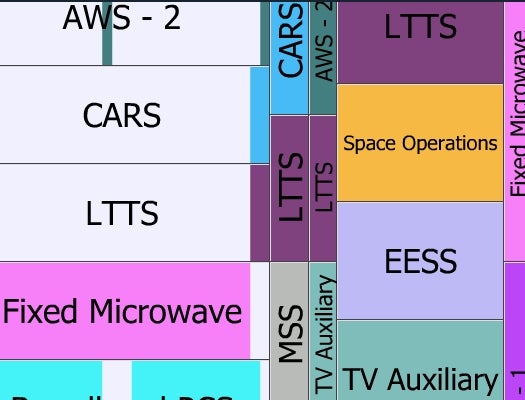To Explain the Broadcast Spectrum, FCC Unveils Cool Interactive Tools
The agency may also open up parts of the spectrum for private experimentation

As part of its grand new plan, the FCC is making a major push to involve and inform the public. RSS feeds, a blog, and a Twitter account have all made relatively recent appearances, along with a home broadband speed test. To better help the public understand the current frequency allocations, the FCC has also rolled out several great new interactive tools on their website for “reviewing how spectrum bands are allocated and for what uses, and who holds licenses and in what areas.”
The tools on the FCC’s Spectrum Dashboard provide access to information about the current spectrum allocations by frequency, type of use, and user. Study enabled by this dashboard can help us to better understand how portions of the spectrum are used and in what areas experimentation and innovation are possible.

Spectrum Bands
The Spectrum Band Browser provides a color-coded breakdown of the current spectrum allocation scheme. Moving the mouse over a portion of the spectrum gives key details on the type of use.
If you find you like this spectrum chart so much that you would like to have a copy of your very own, the full chart is available for download here. Regrettably, the Government Printing Office no longer carries this poster, so you will have to make your own printing arrangements if you’d like to have this on your wall, as I do.

License Holder Map
The Spectrum Dashboard also provides two tools for researching license holders and the portions of the spectrum to which they have been given access. Pictured above is a screen shot of the Map tool, which reveals license holders by county. Searching by both the legally registered and common brand name of the license holder is also supported.

Available Spectrum Map
The spectrum availability map by county provides a visualization of the amount of the licensed bands not currently allocated to license holders. For most of us at the present time, it is somewhere right around none.
If you find yourself interested in the details of the frequency bands, don’t miss the “Search by FCC License Categories” tool. This is a search interface for detailed information about each of the allocated bands in the radio spectrum.
Radio-wave tinkerers may find something else to like. According to a recent New York Times article, “The plan will advise that some of the spectrum become unlicensed, so it can serve as a test bed for new technologies.”
While there are already parts of the spectrum available for public usage, both through the portions allocated for amateur radio and the portions allocated for unlicensed operation, the FCC broadband plan acknowledges the benefits and innovations that have resulted from federal support of research and development and specifically addresses the issue of expanding the parts of the spectrum that are made available for research and experimentation. In section 7 of the plan, it states “Allowing research organizations such as universities greater flexibility to temporarily use fallow spectrum can promote more efficient and innovative communications systems.”